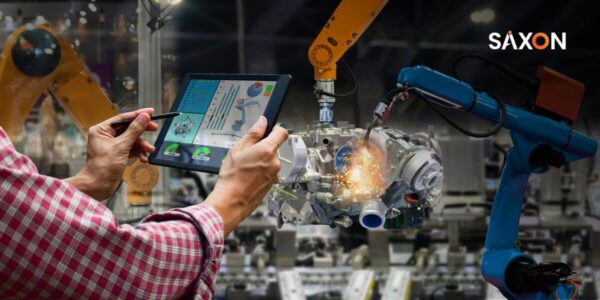Every new technology creates a lot of buzz among business leaders, and the latest conundrum surrounds Generative AI and its use cases across various sectors and industries. Generative AI has impacted global society with unparalleled speed, ambit, and magnitude; hence, the hype is entirely justified. Among the several use cases and potential business benefits of Generative AI, we explore how we can leverage its power in optimizing supply chain operations. We also recommend that enterprises establish essential guardrails to fully harness this technology, which is increasingly ubiquitous. The imminent likelihood is that having the best AI models and top-tier data quality can be disruptive. So disruptive that it can be the deciding factor in the success or failure of an enterprise. So, let us explore how this buzzworthy Generative AI can benefit the realm of the supply chain.
Challenges in Supply Chain
Let us understand the common challenges that enterprises encounter in supply chain optimization.
Variability in demands
Supply chain optimization faces challenges from fluctuating customer demands influenced by seasonality, market trends, unforeseen incidents, or evolving customer preferences. Precisely predicting and managing this demand is imperative to optimizing inventory, followed by production timelines and distribution strategies. Due to the delicate balance of stock levels, inventory management plays a vital role in this regard. Overstocking escalates holding expenses, whereas understocking leads to stockouts and customer dissatisfaction. Achieving optimal inventory levels necessitates reliable demand projection, adept demand-supply alignment, and streamlined inventory replenishment tactics.
Lack of visibility of supply chains
If there is no comprehensive visibility of the entire supply chain network, then the optimization endeavors can be hindered. Inadequate or delayed data regarding inventory levels, transportation status, and supplier performance can result in inefficiencies, delays, and heightened expenses. Attaining complete end-to-end visibility is imperative to detect bottlenecks and make well-informed decisions.
Challenges in transportation and logistics
Streamlining transportation and logistics operations poses a severe challenge within supply chain enhancement. Effective route mapping, carrier choice, load consolidation, and keeping transportation expenses to a minimum are pivotal. Variables such as evolving regulations, traffic congestion, and capacity limitations add an additional layer of complexity to managing transportation and logistics.
Managing risks
Supply chains are susceptible to a diverse range of unprecedented risks. From natural disasters and supplier bankruptcies to geopolitical disturbances and demand volatility, supply chains are prone to many risks. Recognizing and mitigating these risks, having the right backup strategies, and fortifying supply chain resilience are the necessary measures for optimizing.
How can Generative AI help tackle these challenges in the supply chain?
The two kinds of approach to Generative AI
Essentially, Generative AI involves generative models, the two most popular ones being Generative Adversarial Networks (GANs) and Variational Autoencoders (VAEs). GANs use a generator to produce samples from random input and a discriminator to differentiate real from generated samples. Through competitive learning, GANs refine the generator to produce more convincing content while enhancing the discriminator’s ability to distinguish between the two, creating realistic content. On the other hand, VAEs learn a compressed data representation in a latent space, enabling the generation of new samples by interpolating within that space. These models capture patterns and structures from datasets to create new, resembling samples, making them essential for diverse applications.
The two principles of Gen AI
Furthermore, Generative AI works on two key principles. One is data-driven decision-making, and the other is its continuous improvement algorithm.
Data-driven decisions: Leveraging extensive datasets, Generative AI enhances the supply chain by enriching decision-making procedures. It dissects historical data, market patterns, customer behavior, and relevant variables to produce insights and suggestions.
Continuous improvement: Generative AI nurtures a mindset of continuous enhancement through its iterative creation and assessment of solutions. It empowers enterprises to flexibly refine and enhance their supply chain activities, drawing from real-time data and ever-changing market dynamics.
Now, let us understand the practical use cases of Gen AI in supply chain optimization and how businesses can leverage it to revolutionize optimization.
The top use cases of Generative AI in Supply Chain Optimization
Demand forecasting
As demonstrated above, accurate demand forecasting is integral to supply chain efficiency. Businesses can use generative AI to augment their forecasting, resulting in more accurate predictions and improved inventory control. These AI models amalgamate historical sales, market trends, and seasonality for a thorough demand grasp. They evolve through continuous learning, accommodating consumer behaviors and market changes. Enhanced forecasting reduces inventory costs, prevents stockouts, and boosts supply chain efficiency, thus optimizing operations.
Let us glance at the case study of Walmart, a global retail giant that leverages generative AI for demand forecasting. Named Eden, it predicts customer demands at the store level. The model factors in historical sales, local happenings, weather conditions and patterns, and economic cues and generates precise demand forecasts.
Inventory Optimization
By harnessing generative AI algorithms, businesses can enhance inventory optimization by incorporating demand fluctuations, lead times, and cost limitations data. Producing probabilistic demand models empowers enterprises to establish ideal safety stock levels, curtail surplus inventory, and mitigate the threat of stockouts. This subsequently enhances working capital efficiency and generates cost-effective outcomes.
Designing networks and optimizing
Through the creation and assessment of numerous network designs, generative AI can help pinpoint optimal, cost-efficient configurations, helping organizations strike a balance between cost, service, and risk. Moreover, it can simplify scenario planning, enabling the evaluation of events like natural disasters or geopolitical shifts and their potential impact on supply chain networks.
Transportation and Route Optimization
Transportation is a primary cost driver in supply chains, with any advances in routing and transport efficiency beneficially impacting overall operational expenses. Generative AI can play a role in determining optimal transport routes and schedules, factoring in the distance, travel times, fuel expenditures, and vehicle capacities. Generative AI can aid in cost reduction and minimize environmental footprint by creating and analyzing diverse routing options. AI-driven routing algorithms further adapt to shifts in demand and disturbances, upholding the supply chain’s agility and adaptability.
Supplier selection and management
For a robust supply chain, it is essential to establish and nurture connections with reliable suppliers. How can generative AI help here? It can help enterprises select apt suppliers by assessing diverse factors such as quality, lead time, cost, dependability, and more. It can also generate supplier performance profiles and assess the potential risky profiles. This can lead to facilitating data-driven decisions in selecting suppliers. Moreover, this strategy not only guarantees a dependable, economical supply base but also helps mitigate the risks of disruptions linked to supplier concerns.
Dynamic pricing and promotions
By assisting in providing dynamic pricing and promotional strategies, generative AI can also contribute to supply chain optimization. Through analyzing past sales records, competitor pricing, and market dynamics, generative AI can formulate pricing and promotion suggestions that balance profitability and customer satisfaction. Employing such dynamic strategies empowers organizations to adapt to shifts in demand and market circumstances, making them agile and competitive even in uncertain times.
Warehouse management
Efficient warehouse management is crucial for cost-effective storage, handling, and order fulfillment. Generative AI can support this by optimizing layout, storage policies and picking strategies based on demand, space, and handling needs. Multiple layout scenarios generated by AI can enable identifying efficient configurations, resulting in lower costs, faster order fulfillment, and enhanced space use. AI-powered warehouse management systems also adapt to demand shifts, maintaining continuous optimization.
Production planning
Effective production planning and scheduling are vital for optimal operational efficiency and meeting customer needs. Generative AI enhances this process by considering resource limits, lead times, and demand forecasts. Generating and assessing diverse production scenarios assists organizations in identifying efficient plans, ensuring optimal resource use, and timely customer demand fulfillment. Furthermore, generative AI supports swift responses to disruptions like equipment breakdowns, providing real-time alternative production schedules.
Sustainability in the supply chain
In this day and age, incorporating sustainability practices into supply chain management is imperative for enduring business success amidst global concerns. Generative AI can assist by identifying avenues for sustainability, like waste reduction and energy efficiency. Generating and analyzing the different sustainability scenarios allows organizations to gauge the impact of specific initiatives, allowing informed decisions and progress tracking toward sustainability objectives.
Take Away
As we know, generative AI can continuously learn and evolve. So, even when organizations gather more and more data and confront novel challenges, generative AI models can consistently enhance predictions and suggestions, upholding supply chain optimization amid shifts. Integrating generative AI into supply chain management cultivates a culture of perpetual enhancement, driving ongoing efficiency improvements and underpinning sustained growth and competitiveness. With expansive practicality, generative AI in supply chain optimization is a potent tool, amplifying efficiency, curtailing costs, and reinforcing resilience. By embracing generative AI solutions, businesses position themselves for enduring triumph and competitiveness within today’s intricate, ever-changing global market.
If you want to implement generative AI or other Artificial Intelligence (AI) models to elevate your business, you have come to the right place. We at Saxon provide you with tailored strategies and AI models leveraging the latest Microsoft technology to help you overcome challenges and become truly successful.
Get in touch with us now.
Follow us on LinkedIn and Medium to never miss an update.
















